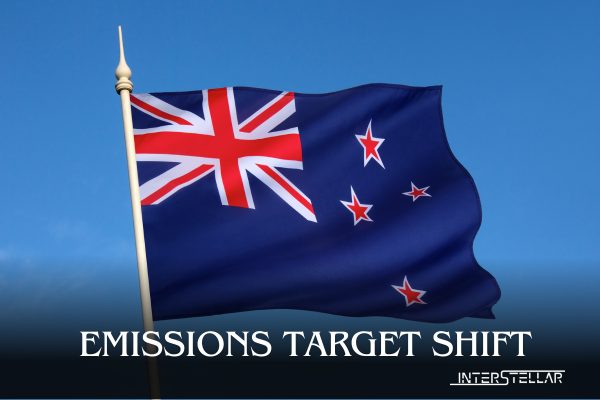Air New Zealand Abandons 2030 Emissions Target
Air New Zealand (AIR.NZ) has abandoned its 2030 emissions reduction target, citing delays in the delivery of fuel-efficient aircraft and high prices for green fuel. This decision highlights the challenges the aviation industry faces in meeting decarbonisation goals.
Commitment to Net Zero by 2050
Although Air New Zealand is the first major airline to step back from its climate aspirations, the carrier remains committed to achieving net zero emissions by 2050. The airline is working on setting a new near-term goal to continue its efforts towards reducing its carbon footprint.
Challenges in Decarbonising Aviation
Aviation is responsible for about 2% of global emissions and is one of the most difficult sectors to decarbonise. This is because fuel for flights cannot be easily replaced with other kinds of power. Air New Zealand has highlighted several factors hindering its efforts to meet the 2030 target. These include the availability of new aircraft, the affordability and availability of alternative jet fuels, and the necessary regulatory and policy support, all of which are beyond the airline’s direct control.
Reliance on Sustainable Aviation Fuels
Airlines are relying on plant-based Sustainable Aviation Fuels (SAF) and more efficient aircraft to reduce emissions. However, SAF production is both expensive and difficult to scale up. Additionally, aircraft manufacturers are struggling to deliver new-generation planes on time, further complicating airlines’ efforts to reduce emissions.
Previous Emissions Reduction Target
In 2022, Air New Zealand aimed to reduce carbon intensity by 28.9% by 2030, compared to 2019 levels. This target was validated by the Science-based Targets initiative (SBTi), a U.N.-backed corporate climate action group. The airline’s target was more ambitious than the global aviation industry’s agreement to lower carbon emissions by 5% by 2030.
Fleet and Operational Challenges
Air New Zealand has orders for Boeing 787 Dreamliner and Airbus A320neo planes. CEO Greg Foran mentioned that recent delivery delays risked the 2030 goal, leading to the airline’s immediate withdrawal from the SBTi network. Foran also indicated that the airline might need to keep its existing fleet longer than planned due to these delays.
In February, Air New Zealand announced that five of its newest A321neo aircraft would be out of service at any time over the next 18 months due to maintenance issues with their Pratt & Whitney engines, a problem affecting airlines globally.
Environmental Commitments and Government Policies
Despite these challenges, Air New Zealand has made environmental commitments, including ordering an all-electric five-seat plane and planning a demonstration flight by 2026. However, the airline had previously described the 2030 target as aspirational and challenging, with many factors outside its control.
New Zealand’s conservative government, elected last October, has been rolling back several environmental policies, including removing agriculture from the emissions trading scheme and reducing incentives for companies to adopt green practices. A draft emissions plan released last week indicates that due to these policy changes, the country may miss its 2035 emissions and net zero by 2050 targets.
Industry and Academic Perspectives
Professor Sara Walton, co-director of the University of Otago Climate Change Research Network, emphasised the need for industry leaders in the climate and emissions space. She expressed concern over Air New Zealand’s move away from the SBTi, given the lack of supportive policies and regulations.
Meanwhile, Lufthansa (LHAG.DE) announced last month an environmental charge on fares to cover the cost of new EU rules on reducing emissions. Airlines have warned that SAF mandates will increase costs, highlighting the financial challenges of transitioning to more sustainable aviation practices.





